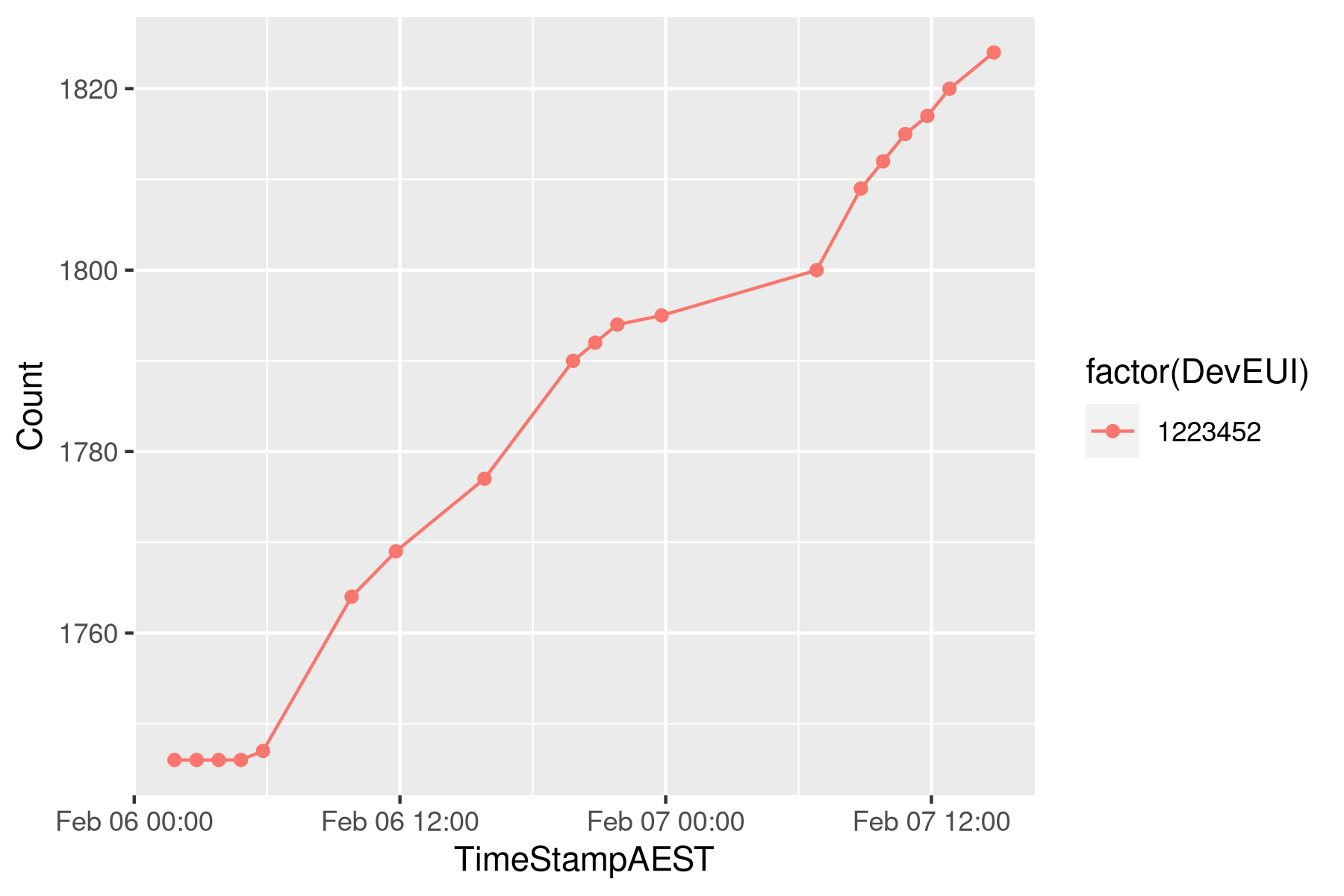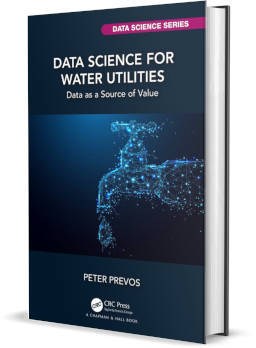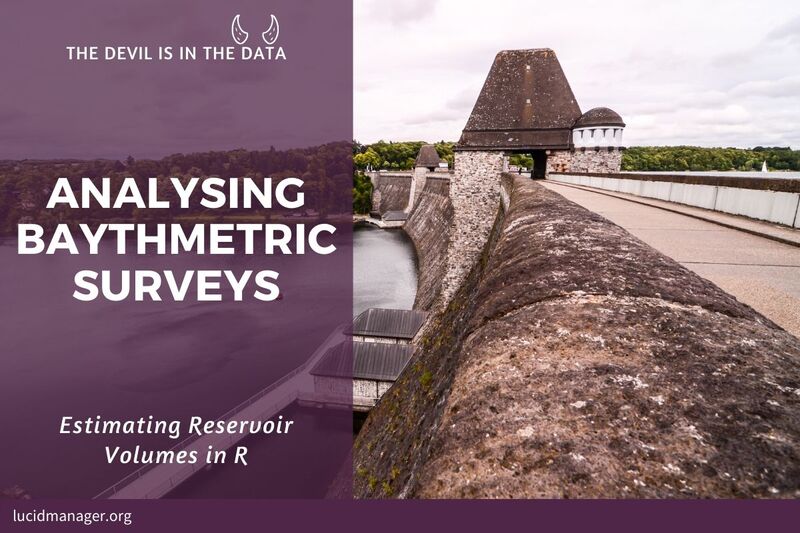
Simulating Water Consumption to Develop Analysis Tools

Peter Prevos |
1376 words | 7 minutes
Share this content
I am currently working on developing analytics for a digital water metering project. Over the next five years, we are enabling 70,000 customer water meters with digital readers and transmitters. The data is yet to be available, but we want to build reporting systems before the data is live. The R language comes to the rescue as it has magnificent capabilities to simulate data. Simulating data is a valuable technique to progress a project when data is being collected. Simulated data also helps because the analysis outcomes are known, which allows for validating the results.
The raw data that we will eventually receive from the digital customer meters has the following basic structure:
device_id: Unique device identifier.timestamp: Date and time in (UTC) of the transmission.count: The number of revolutions the water meter makes. Each revolution is a pulse which equates to five litres of water in a regular customer water meter.
Every device will send an hourly data burst which contains the cumulative meter read in pulse counts. The transmitters are set at a random offset from the whole hour to minimise the risk of congestion at the receivers. The timestamp for each read is set in the Coordinated Universal Time (UTC). Using this time zone prevents issues with daylight savings. All analysis will be undertaken in the Australian Eastern (Daylight) Time zone.
This article explains how we simulated test data to assist with developing reporting and analysis. The analysis of digital metering data follows in a future post.
Simulating water consumption
For simplicity, this simulation assumes a standard domestic diurnal curve (average daily usage pattern) for indoor water use. Diurnal curves are an essential piece of information in water management. The curve shows water consumption over a day, averaged over a fixed period. The example below is sourced from a journal article. This generic diurnal curve consists of 24 data points based on measured indoor water consumption, shown in the graph below.

This diurnal curve only includes indoor water consumption and is assumed independent of seasonal variation. This assumption is unrealistic, but the purpose of this simulation is not to accurately model water consumption but to provide a data set to validate the reporting and analyses.
Simulating water consumption in R
The first code snippet sets the parameters used in this simulation. The unique device identifiers (DevEUI) are simulated as six-digit random numbers. The timestamps vector consists of hourly date-time variables in UTC. For each transmitter, this timestamp is offset by a random time. Each transmitter is also associated with the number of people living in each house. This number is based on a Poisson distribution.
# Simulate water consumption
library(tidyverse)
rm(list = ls())
# Boundary conditions
n <- 100 # Number of simulated meters
d <- 100 # Number of days to simulate
s <- as.POSIXct("2050-01-01", tz = "UTC") # Start of simulation
set.seed(1969) # Seed random number generator for reproducibility
rtu <- sample(1E6:2E6, n, replace = FALSE) # 6-digit id
offset <- sample(0:3599, n, replace = TRUE) # Unique Random offset for each RTU
# Number of occupants per connection
occupants <- rpois(n, 1.5) + 1
# Visualise
as_tibble(occupants) %>%
ggplot(aes(occupants)) +
geom_bar(fill = "dodgerblue2", alpha = 0.5) +
xlab("Occupants") +
ylab("Connections") +
theme_bw(base_size = 10) +
labs(title = "Occupants per connection")
The diurnal curve is based on actual data, including leaks, as the nighttime use shows a consistent flow of about one litre per hour. Therefore, the figures are rounded and reduced by one litre per hour to show a zero flow when people are usually asleep. The curve is also shifted by eleven hours because the raw data is stored in UTC.
# Diurnal Curve
diurnal_au <- round(c(1.36, 1.085, 0.98, 1.05, 1.58, 3.87, 9.37, 13.3, 12.1, 10.3, 8.44, 7.04, 6.11, 5.68, 5.58, 6.67, 8.32, 10.0, 9.37, 7.73, 6.59, 5.18, 3.55, 2.11)) - 1
tdiff <- 11
diurnal_utc <- c(diurnal_au[(tdiff + 1): 24], diurnal_au[1:tdiff])This simulation only aims to simulate a realistic data set and not to present an accurate depiction of reality. This simulation could be enhanced by using different diurnal curves for various customer segments, including outdoor watering, temperature dependencies and so on.
Simulating Water Consumption
A leak is defined by a constant flow through the meter and the idealised diurnal curve. A weighted binomial distribution (θ = 0.1) models approximately one in ten properties with a leak. The size of the leak is derived from a random number between 10 and 50 litres per hour.
The data is stored in a matrix through a loop that cycles through each connection. The DevEUI is repeated over the simulated period (24 times the number of days). The second variable is the timestamp plus the predetermined offset for each RTU.
The meter count is defined by the cumulative sum of the diurnal flow multiplied by the number of occupants. Each point in the diurnal deviates from the model curve by ±10%. Any predetermined leakage is added to each meter read over the whole period of 100 days. The hourly volumes are summed cumulatively to simulate meter reads. The flow is divided by five as each meter revolution indicates five litres.
The following code snippet simulates the digital metering data using the above assumptions and parameters.
# Leaking properties
leaks <- rbinom(n, 1, prob = .1) * sample(10:50, n, replace = TRUE)
data.frame(device_id = rtu, leak = leaks) %>%
subset(leak > 0)
# Digital metering data simulation
meter_reads <- matrix(ncol = 3, nrow = 24 * n * d)
colnames(meter_reads) <- c("device_id", "timestamp" , "count")
for (i in 1:n) {
r <- ((i - 1) * 24 * d + 1):(i * 24 * d)
meter_reads[r, 1] <- rep(rtu[i], each = (24 * d))
meter_reads[r, 2] <- seq.POSIXt(s, by = "hour", length.out = 24 * d) + offset[i]
meter_reads[r, 3] <- round(cumsum((rep(diurnal_utc * occupants[i], d) +
leaks[i]) * runif(24 * d, 0.9, 1.1)) / 5)
}
meter_reads <- as_tibble(meter_reads) %>%
mutate(timestamp = as.POSIXct(timestamp, origin = "1970-01-01", tz = "UTC"))Missing Data Points
The data transmission process is not 100% reliable, and the base station will not receive some reads. This simulation identifies reads to be removed from the data through the temporary variable removal. This simulation includes two types of failures:
- Faulty RTUs (2% of RTUs with missing 95% of data)
-
Randomly missing data points (1% of data)
# Set missing indicator meter_reads <- mutate(meter_reads, remove = 0) # Define faulty RTUs (2% of the fleet) faulty <- rtu[rbinom(n, 1, prob = 0.02) == 1] meter_reads$remove[meter_reads$device_id %in% faulty] <- rbinom(sum(meter_reads$device_id %in% faulty), 1, prob = .5) # Data loss missing <- sample(1:(nrow(meter_reads) - 5), 0.005 * nrow(meter_reads)) for (m in missing){ meter_reads[m:(m + sample(1:5, 1)), "remove"] <- 1 } # Remove missing reads meter_reads <- filter(meter_reads, remove == 0) %>% select(-remove) # Write to disk write_csv(meter_reads, "data/meter_reads.csv") ##Visualise filter(meter_reads, device_id %in% sample(faulty, 1)) %>% mutate(timestamp = as.POSIXct(format(timestamp, tz = "Australia/Melbourne"))) %>% filter(timestamp >= as.POSIXct("2050-02-06") & timestamp <= as.POSIXct("2050-02-08")) %>% arrange(device_id, timestamp) %>% ggplot(aes(x = timestamp, y = count, colour = factor(device_id))) + geom_line() + geom_point()
The graph shows an example of the cumulative reads and some missing data points.

Analysing Digital Metering Data
Data simulation is a good way to develop your analysis algorithms before you have real data. I have also used this technique while waiting for survey results during my dissertation. When the data finally arrived, I plugged it into the code and finetuned it. R has great capabilities to simulate reality to help you understand the data. The ggplot package provides excellent functionality to visualise water consumption.
In next week's article, I will outline how I used R and the Tidyverse package to develop libraries to analyse digital metering data.
This data was used as a case study in the book Data Science for Water Utilities.

Data Science for Water Utilities
Data Science for Water Utilities published by CRC Press is an applied, practical guide that shows water professionals how to use data science to solve urban water management problems using the R language for statistical computing.
Share this content


